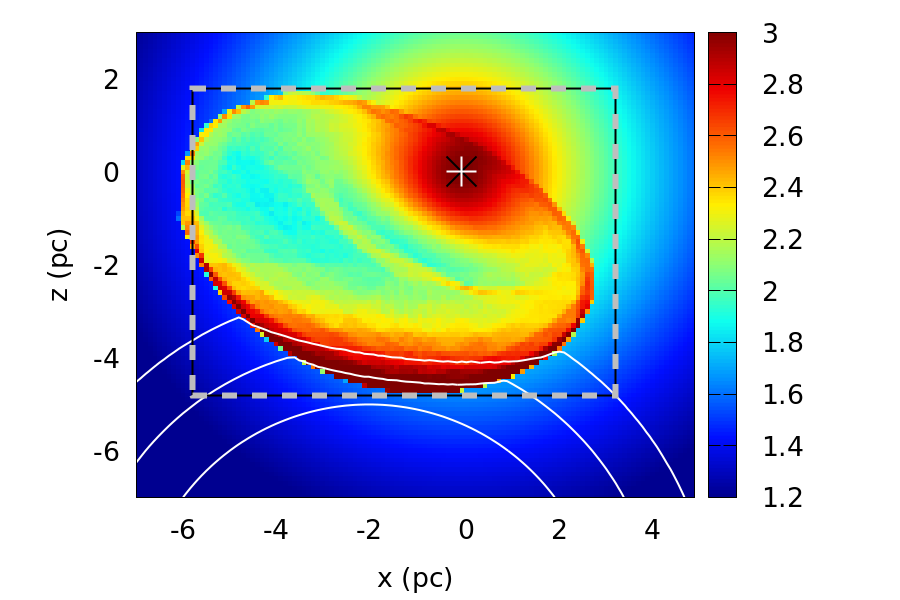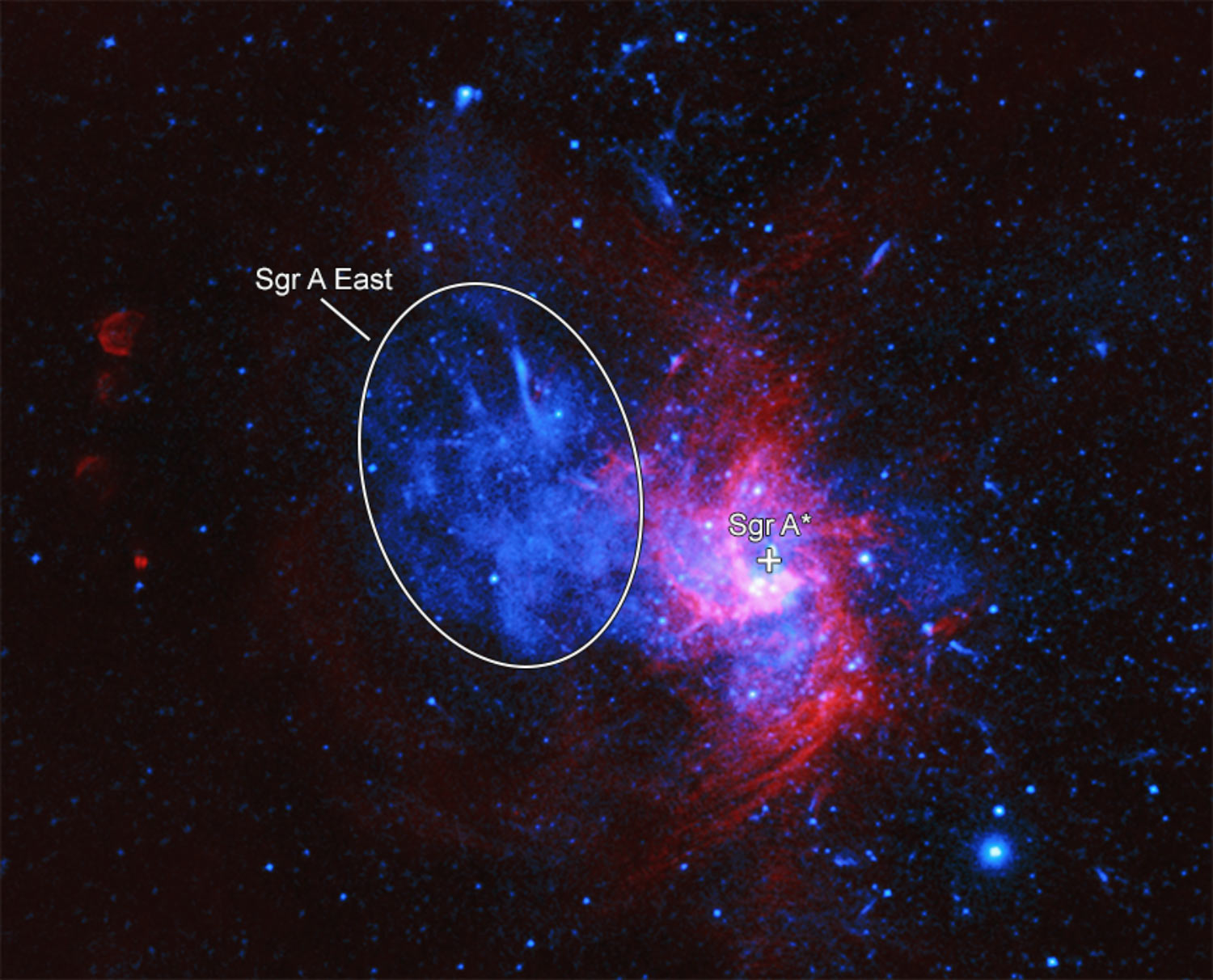The astrophysicist from Szeged also contributed to the hydrodynamic analysis of the shape of the long-known but as yet undiscovered supernova remnant in the central region of the Milky Way.
Based on radio frequency studies conducted by the Milky Way Galaxy Center, we know that many starbursts have occurred in the central region of our galaxy in the last hundred thousand years. Shock waves from supernova remnant (SNR) bubbles pollute their environment with heavier elements, initiate the formation of new generations of stars, and may even contribute to the development of the supermassive black hole at the galactic core known as Sgr A*. However, due to their great distance of more than 25,000 light-years from us, we know very little about the properties of these giant gas bubbles. Even in the case of Sgr A East, the most studied supernova remnant in the center of the galaxy, we don’t know the origin or time of the explosion or even if the gas cloud is in front of or behind the central black hole…
New research, whose authors include Barnabas Barna, an astronomer at the SZTE Institute of Physics, has provided even more precise answers to these questions.
The researchers started from what little information is known for certain about Sgr A East: these are just the shape and size of the remains. However, if we add to this that according to theories, supernova explosions are essentially spherically symmetric processes, it follows that we can infer environmental effects from the shape of the remnants. Stellar winds from the central region, interstellar layers of matter, dense molecular clouds – just a few examples of the effects that can affect the size and shape of the SNR. Building on previous studies targeting the galactic center, the researchers built a kind of “obstacle course” for the models, where environmental influences can be studied together or separately. For the simulations, a code designed for hydrodynamic calculations was used, which can be used to model rapidly expanding gas bubbles in various environments, including SNRs.
After testing the obstacle course, all that remained was to find out where and when the explosion could have started. To do this, the research team ran thousands of simulations, continuously experimenting with all conceivable combinations of parameters, and finally selected the one that best reproduces the shape of Sgr A East as the winner.

According to the most likely scenario obtained from supernova remnant synthesis, the explosion could have occurred 10,000 years ago – viewed from the direction of the solar system – about 12 light-years behind the supermassive black hole. Depending on the age of the remnants, a massive star may have exploded (the so-called implosion supernova), but a special thermonuclear supernova of relatively lower energy (the so-called Iax) cannot be ruled out either.
The study makes an interesting claim not only about the past, but also about the distant future: The movement and expansion of the supernova remnant has not stopped and is still “sweeping” interstellar gas in its path. However, in the long run, the residual pathway can only lead in one direction: deep into Sgr A*. According to models, approximately 70,000 years later. It funnels 1,000 solar masses of material into the supermassive black hole’s immediate vicinity, further fattening the already 3.6 million solar mass monster.
famous Astronomy and astrophysics A preprint copy of an accepted publication in a trade journal on this link Available.
Suspension












































